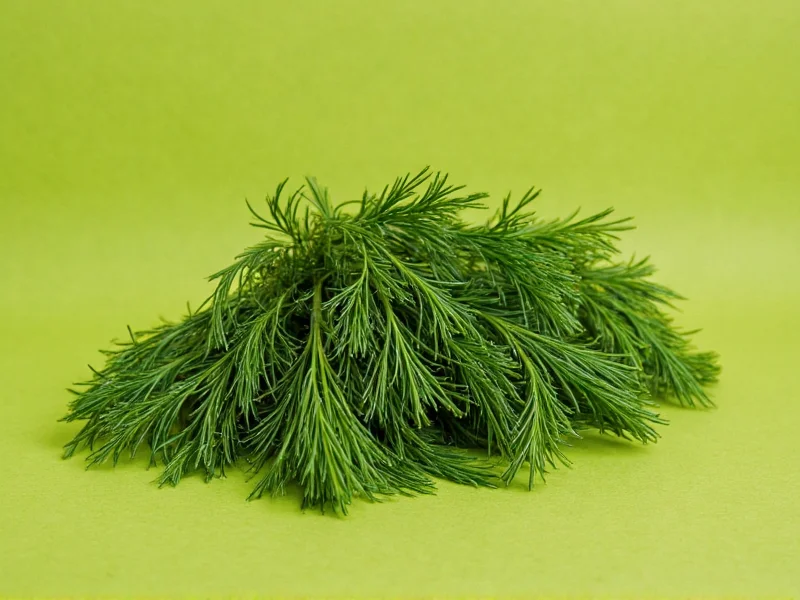When you're preparing a recipe that calls for dill but find your spice rack empty, knowing effective dill alternatives can save your meal. Whether you're making tzatziki, potato salad, or pickling cucumbers, the right substitute maintains your dish's intended flavor profile while working with what's available in your kitchen.
Understanding Dill's Unique Flavor Profile
Dill brings a distinctive fresh, grassy flavor with subtle anise notes and citrus undertones. This delicate herb works particularly well with fish, potatoes, eggs, and in pickling recipes. When seeking a dill substitute, consider whether your recipe needs the fresh herb or if dried dill would suffice, as this dramatically affects which alternatives will work best.
Top Dill Substitutes for Cooking and Baking
Fresh Tarragon
Fresh tarragon stands as the closest flavor match to dill, offering similar anise notes with a slightly more pronounced licorice flavor. Use it in a 1:1 ratio when substituting for fresh dill in sauces, dressings, and seafood dishes. This dill alternative works exceptionally well in recipes like tzatziki or creamy dill sauce where the anise notes complement other ingredients.
Fennel Fronds
The feathery green tops of fennel bulbs provide both visual similarity and complementary flavor to dill. They offer mild anise notes with a slightly sweeter profile. Use fennel fronds in a 1:1 ratio as a fresh dill substitute, particularly effective in salads, fish dishes, and as a garnish. When exploring what to use instead of dill in cucumber salad, fennel fronds create an elegant presentation with harmonious flavors.
Dried Dill Weed
When fresh dill isn't available, dried dill weed serves as the most straightforward substitute. Remember that dried herbs are more concentrated, so use one-third the amount of dried dill compared to fresh (1 teaspoon dried = 1 tablespoon fresh). This dried dill alternative works well in soups, stews, and bread recipes where fresh herbs would wilt during cooking.
Caraway Seeds
Caraway offers the closest seed alternative to dill seed, sharing similar earthy, anise-like qualities. Use caraway seeds at half the amount of dill seed called for in recipes. This substitute shines in rye bread, sauerkraut, and certain pickling applications where dill seed would typically feature.
| Substitute | Best For | Ratio | Flavor Notes |
|---|---|---|---|
| Fresh Tarragon | Sauces, fish, dressings | 1:1 | Stronger anise, slightly peppery |
| Fennel Fronds | Salads, garnishes, fish | 1:1 | Milder anise, slightly sweet |
| Dried Dill Weed | Cooking, baking, long-simmered dishes | 1:3 (dried:fresh) | Less bright, more earthy |
| Caraway Seeds | Pickling, breads, hearty dishes | 1:2 | Stronger, earthier anise |
| Parsley | General cooking when flavor isn't critical | 1:1 | Much milder, no anise notes |
Best Dill Substitute for Pickling
When searching for what to use instead of dill in pickling recipes, dill seed provides the most authentic flavor. Use one teaspoon of dill seed per quart of pickling liquid as a direct substitute for fresh dill heads. For a more complex flavor profile similar to fresh dill, combine equal parts dill seed and caraway seeds. This combination creates what professional picklers consider the best dill substitute for refrigerator pickles when fresh dill isn't available.
Substitutes to Avoid in Specific Applications
While many herbs can technically replace dill in a pinch, certain substitutes create disappointing results in specific applications:
- Dill in potato salad - Avoid strong herbs like rosemary or oregano which overpower delicate potato flavors
- Dill in fish dishes - Skip pungent herbs like cilantro which clash with seafood
- Dill in tzatziki - Avoid dried herbs which lack the fresh brightness essential to this sauce
Adjusting Quantities When Substituting Dill
Understanding herb concentration differences prevents flavor imbalances. When using dried herbs as a fresh dill alternative, remember the 1:3 ratio (1 part dried to 3 parts fresh). For stronger substitutes like tarragon, start with half the recommended amount and adjust to taste. When exploring what to use instead of dill in sensitive applications like creamy sauces, add substitute herbs gradually while tasting.
Growing Your Own Dill for Future Use
If you frequently find yourself searching for dill substitutes, consider growing your own dill plant. This hardy herb grows well in containers or garden beds, providing fresh dill throughout the growing season. For year-round availability, freeze fresh dill in olive oil cubes or dry dill weed properly to maintain flavor for cooking applications when fresh isn't available.











 浙公网安备
33010002000092号
浙公网安备
33010002000092号 浙B2-20120091-4
浙B2-20120091-4